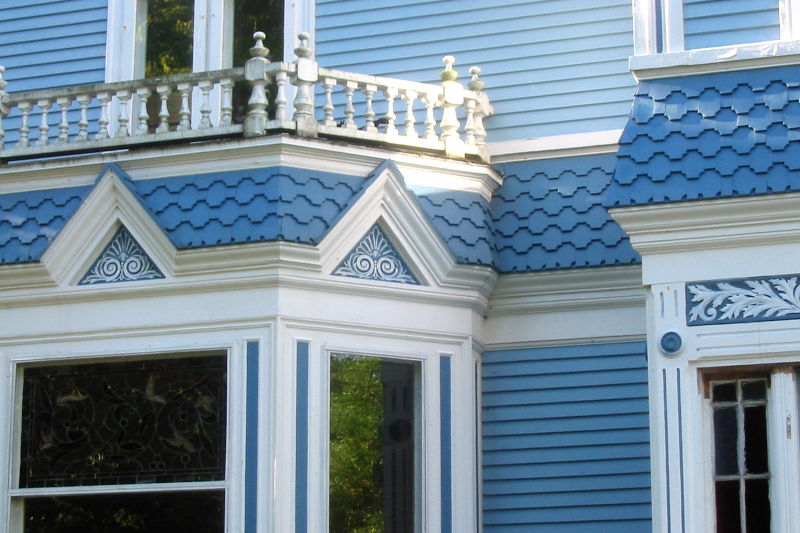Yarmouth is Nova Scotia’s second city, though not nearly as big as Halifax. I almost see the city has been broken down into different sections. There is the shopping strip where cement, gigantic chain stores and strip malls are prevalent; then there is the wharf / waterfront area where you can watch the fishing boats come in and out while you are enjoying a coffee; and, there is the historical section of town with old houses and a peaceful atmosphere. We spent most of our tour time in the historical section looking at old houses and marvelling at the details, as you can see in the photos below.
Here is a brief history of Yarmouth from the Yarmouth website:
At one time the settlement known as Yarmouth today was called “Forchu” ie : “forked or cloven cape”. It was given the name by Champlain in 1604. But the area where the lighthouse is located today is still known as “Cape Forchu”.
Some authorities say it was named after the Township of the town of Yarmouth in the State of Massachusetts; others say this is absurd, although it is that some of the earliest settlers came from that place. As all the counties evidently named by English authorities, it would appear that Yarmouth was named as Digby, Shelburne, etc…after an English title personage of that time.
The Indians called Yarmouth “Keespongwitk” meaning “Land’s End”.
Yarmouth Town was incorporated in the year 1890. The first settlers of Yarmouth were Acadian French & refugees from New England. Yarmouth County is divided into two townships Yarmouth and Argyle. The County contains 736 square miles.
Yarmouth’s Population is around 7500 people
